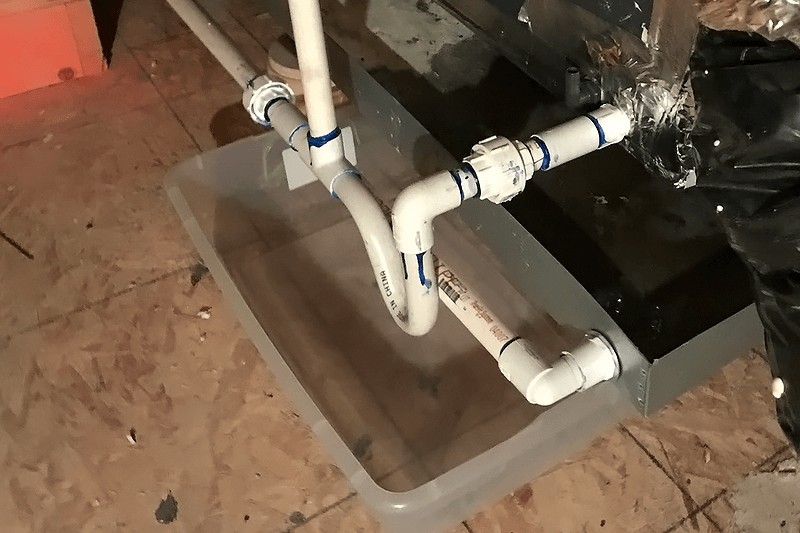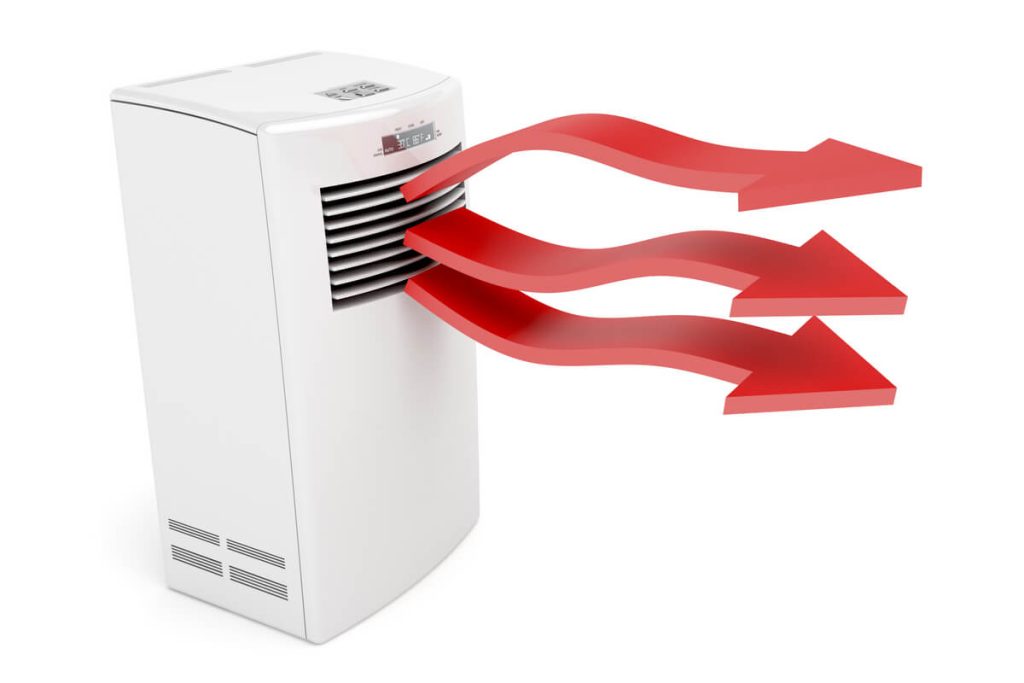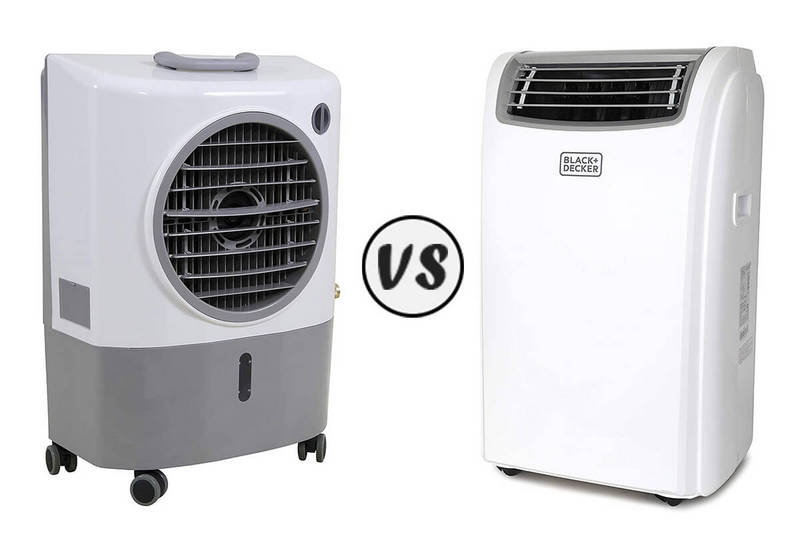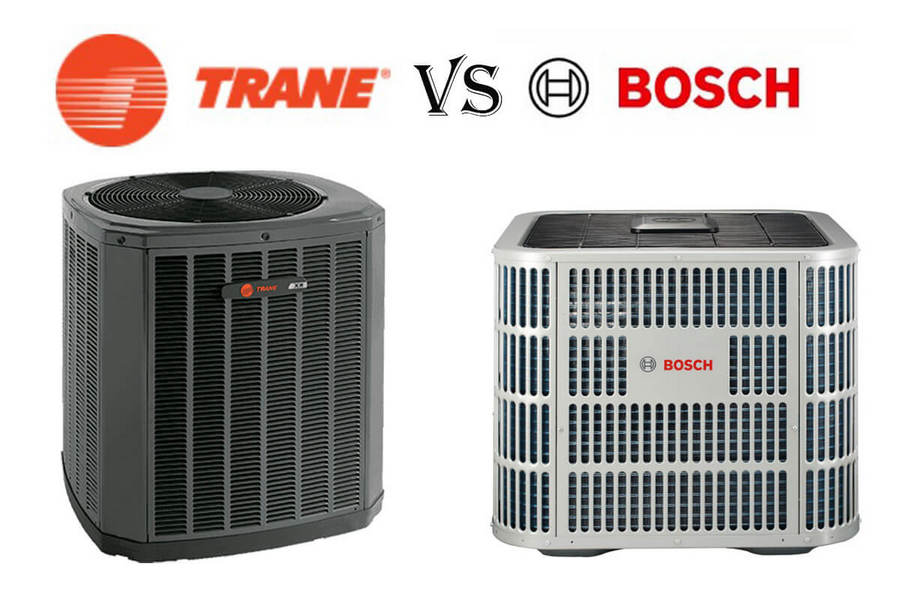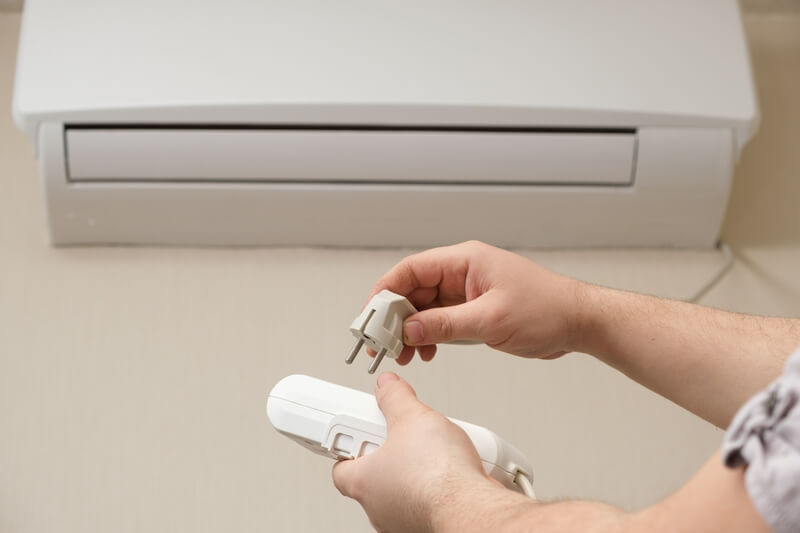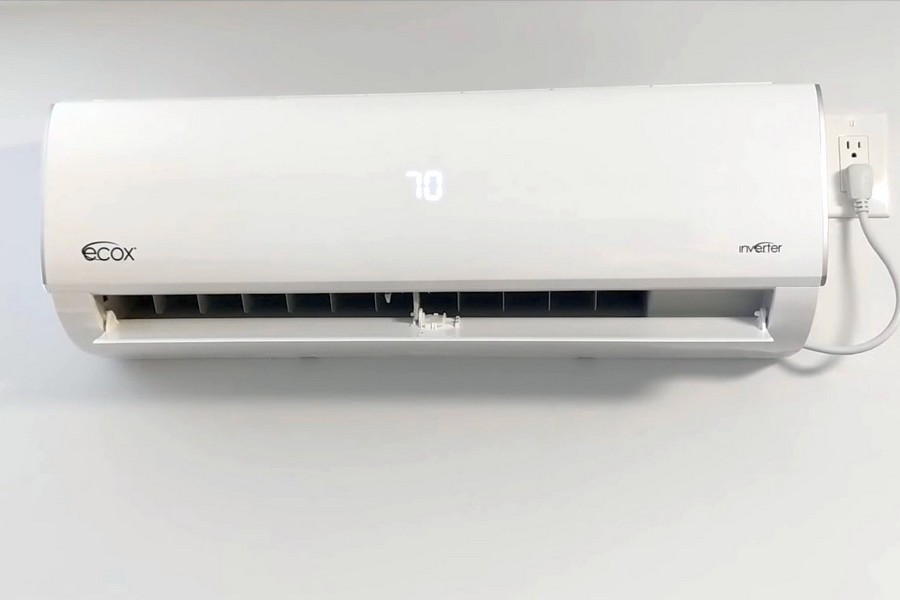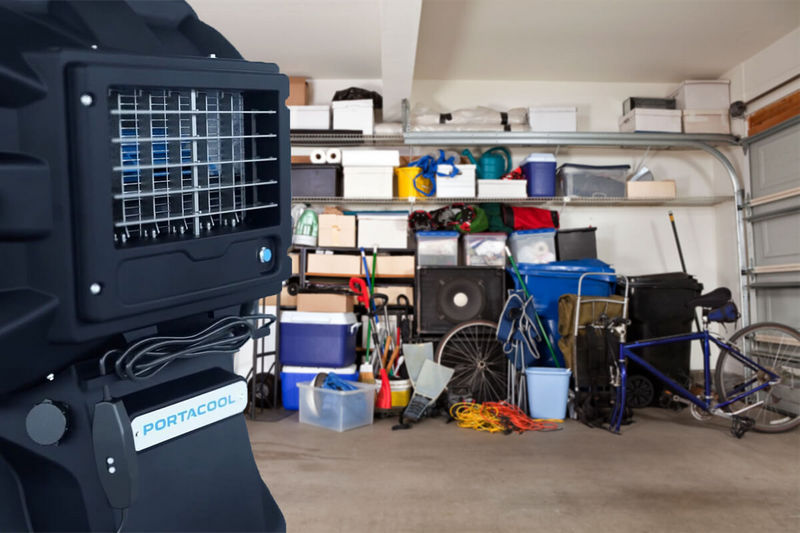Many homeowners don’t know what a condensate drain pan is and its importance in a home’s HVAC system. Generally, it is a tray that helps protect homes from mold growth and significant water damage. It also helps protect the central air system from premature system failure.
Continue reading if you need to learn what this essential HVAC component is about and how it works. This post will also cover everything from locating your AC drain pan to conducting basic maintenance yourself.
What Is a Condensate Drain Pan and How Does It Work?
Aside from regulating indoor temperature, an air conditioner also keeps your home from getting humid by removing condensation (when water vapor becomes liquid). An air conditioner produces between 5 to 20 gallons of condensation per day.
A condensate drain pan collects excess water produced during the air conditioning process. But where does this excess water come from?
During the cooling process, the evaporator coil fills with cold refrigerant. As the evaporator coil drops at a low temperature, it becomes cold. What follows is condensation that forms along the evaporator coils.
This is similar to what happens to a glass of iced water on a hot day. Beads of water collect along the evaporator coil. After a few moments, water slips down to the sides of the evaporator coil and right into an AC drain pan below.
A condensate drain pan is there to ensure that excess water generated during the air conditioning process is collected and removed from the HVAC unit. Excess water goes into a drain tube (or pipes) connected to a drain line. Drain lines move the water into a sewage system or an external location.
RELATED: 3 Ways How To Drain Portable Air Conditioner
Where Is the Condensate Pan Located?
The condensate drain tray is part of the evaporator coil. These two are located in the furnace. Typically, the AC drain pan is located below the evaporator coil.
Evaporator coils are rectangular or triangular-shaped components made up of rows of copper pipes that run through several layers of aluminum fins. Evaporator coils are often found right before the air filter.
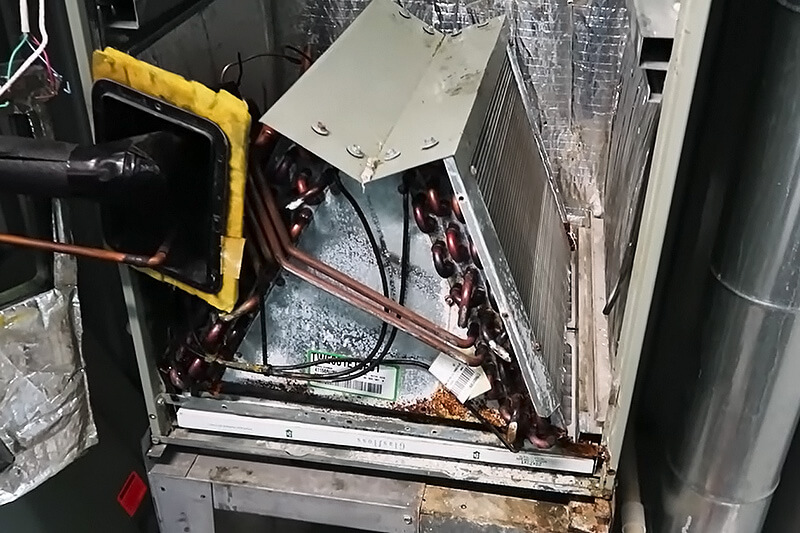
Often, the location of the condensate drain pan depends on the type of furnace installation and its location inside a home.
Vertical furnace application
In a vertical furnace application, the unit is positioned upright where the air runs up and down. This application requires a single condensate drain pan since water leaks go in a single, vertical direction.
The evaporator coil can be found atop the furnace or air handler. The condensate drain tray is right below the evaporator coil. This type of furnace application is often installed in garages and utility closets.
Horizontal furnace application
In horizontal furnace applications, the central air system lies on its side, where air runs from side to side. Unlike the vertical counterpart, the water drips all over the unit, not in one concentrated area. For this reason, a secondary drain pan is necessary.
The evaporator coil sits beside the furnace and air ducts. The primary condensate drain pan can be found below it. This type of furnace is installed horizontally due to space constraints in the attic.
When the primary drain pan fails, water can overflow and may damage the ceiling, drywall, and wood. A secondary condensate drip pan is fitted below the entire unit to ensure an added layer of protection from potential water damage.
Reasons Your Drain Pan Is Full of Water
When there’s standing water in your AC drain pan, it means something is wrong. The drain pan is designed to collect excess water and should continuously drain it to an external location.
Here are a few reasons your air conditioner drip pan is full of water.
Frozen evaporator coil
Standing water in the drain pan can also happen when the evaporator coil is frozen. A leak somewhere in the HVAC system often causes evaporator coils to freeze when refrigerant levels are low. Consequently, frozen evaporator coils can result in additional dripping leading to water overflowing from the drain pan.
Drain pan issues
Sometimes, when an air conditioner drip pan is full of water, it can be an issue within the pan itself. It may have been positioned at the wrong angle. The drain outlet should be on the lower side to ensure water runs toward it.
Another issue with drip pans is wear and tear. A damaged drip pan can have cracks that allow water to leak and pool at the bottom of the evaporator coil.
Maintenance of HVAC Drain Pan
Routine inspections and maintenance ensure you catch and prevent issues immediately.
Inspecting the Condensate Pan
- Turn on your AC and let it run for half an hour.
- Look for standing water around the unit and in the furnace or air handler.
- Turn off your AC unit first, and then turn off the main switch.
- Remove the access panel.
- Use your flashlight to inspect the condition of the drip pan. Look for holes and cracks at the sides and base of the pan. Look also for clogging in the drain pipe.
- Slowly pour water into the drain pan. Look for water dripping while observing the water level. If there are no issues, the water should empty freely and travel into the drain line.
Basic Drain Pan Maintenance
- Inspect the drain pipe for leaks, cracks, or dirt/mold buildup. Use a wire brush to unclog the drain pipe. You can add a little bleach for good measure. Replace the pipe if there are cracks or holes.
- Ideally, drip pans are designed to be balanced on all sides. A misaligned drain pan just needs a simple readjustment. Replace your drip pan if it has cracks or holes.
- A frozen evaporator coil is a serious issue and should be addressed by your local HVAC technician.

